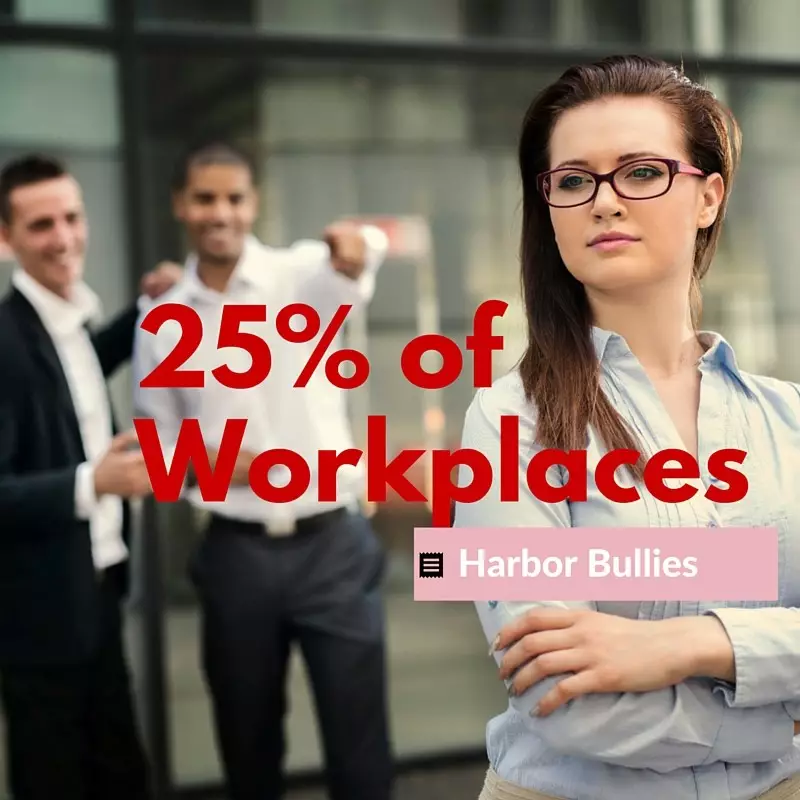Eliminate Harassment – Create a Positive Workplace

My last article about harassment in the workplace was an introduction to the topic geared specifically towards leaders of organizations. But harassment is a problem that everyone needs to deal with in workplaces across the nation, no matter what level or position they’re in.

Employees need to be aware of the differences in different kinds of behaviors. Incivility refers to those rude remarks, off-color jokes, or angry outbursts that can be so common in workplaces. While not illegal, they indicate potential organizational culture issues that run the risk of scaling up into worse behaviors.
Then there’s bullying, which is also not considered to be illegal in the US. Bullying is reoccurring aggressiveness in communication, humiliating others, or manipulating work to make someone else’s job more difficult. Part of why bullying is different from harassment or discrimination is because it’s not directed at someone solely on the basis of some kind of demographic characteristic such as age, gender, race, and so on. It’s been estimated that bullying takes place in at least 25% of all US workplaces.
Harassment takes bad behaviors even further, and it is illegal. Harassment is unwelcome conduct that is intimidating, hostile, abusive, and interferes with an employee’s ability to get their job done. Furthermore, it is typically based on the victim being a member of “protected class,” meaning the person is being harassed because of their race, color, age, disability, religion, national origin, gender, sexual orientation or gender identity, and so on. Sexual harassment involves unwanted sexual advances, demands for sexual favors, or hostile comments and jokes of a sexual nature. Discrimination is when employees are denied equal opportunities and/or benefits because they happen to be members of one of the previously mentioned protected classes. Harassment and discrimination often occur simultaneously, but not always.
There’s a lot at stake in eliminating harassment from workplaces. If you’ve ever experienced it yourself, you know how debilitating it can be. You might find yourself distracted during the day thinking about it, which makes you less productive. You might call out sick more frequently to avoid it. If it doesn’t stop, you might decide to quit your job altogether and the organization will experience the significant costs of turnover to hire a new worker. If you file a complaint with your HR department, you may or may not be satisfied with how your complaint is handled, and you may even experience retaliation from others just for making the complaint. Once again, the ultimate result may be you leaving the organization, and perhaps filing a lawsuit as well. But the effects of harassment extend well beyond the direct victims. If you’ve ever witnessed harassment taking place, you might also find yourself dwelling on it and what it means to your future with this company. Even just being exposed to harassing behaviors can be nearly as bad as being a direct victim of them.
If you consider all these different kinds of toxic behaviors – incivility, bullying, harassment, and discrimination – the cost to corporate America has been estimated as high as $300 billion each year, according to a 2010 study by the American Psychological Association. Clearly, eliminating harassment and creating a positive work environment is the business of every American worker.
Preventing Harassment: Creating a Positive Workplace in Office Settings:
This is a Video on Demand training course designed for all employees to show how harassment based on sex, race, religion, age, disability or other legally protected characteristics can create a hostile work environment interfering with employees’ ability to perform their job. Harassing behaviors are demonstrated, along with the right way to respond to those behaviors, the need to report harassment, and making sure employees know how to self-evaluate their own behaviors. It is an excellent way to educate employees about their rights and responsibilities to help ensure a harassment-free workplace.
- See how to Train People Who Don’t Want to Be Trained – Barriers to Training
- Download our The Strategic Value of Workplace Training and Development white paper